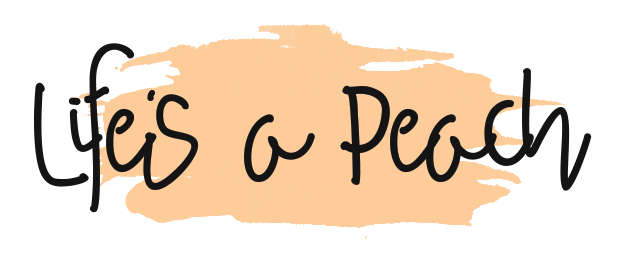Since World War I,daylight savings has been used in the United States and in parts of Europe. The initial purpose of daylight savings was to help conserve fuel used for electric power during the war, according to Web Exhibits. Other countries later hopped on the band wagon while others have refrained from doing so. Nevertheless, many consider daylight savings to be outdated.
But its so-called in convenience and irrelevancy aren’t the only things that have people debating against the time change. Research on the impact of switching our clocks an hour behind in the fall and an hour ahead in the spring has given us shocking results. Just by an hour alteration in our biological clocks, these six side-effects of time changes are quite concerning:
- Reduced sleep length and sleep efficiency
Losing an hour of sleep the day we set our clocks an hour ahead is bound to have an effect on our sleep if we wake up the usual time we do the next morning. However, one’s sleep isn’t just affected the day of the time change; it continues to be affected afterward.
A study conducted on 35 high school students discovered that an average of 27 minutes of sleep was lost a night post-daylight savings. While 27 minutes may not seem significant, a reduction in psychomotor vigilance, slower reaction times, and increased sleepiness throughout the day was also found among the group.
For growing adolescents who are enrolled full-time in school and/or working a job on the side, decreased sleep length, reduced sleep efficiency, and the effects that result from such may even be more alarming than the effects on an older adult.
- Increased risk of heart issues
When our clocks spring an hour forward in March, the one-hour change can have negative effects on heart health, especially for those who are already at risk of heart problems. In fact, a study in the New England Journal of Medicine found that the rate of heart attacks is reportedly lower shortly after daylight savings ends but spikes just days after it begins again in the spring.
Unfortunately,heart attacks aren’t the only cardiovascular problem found to be correlated by springing forward; the number of strokes has also been found to be higher. Dueto the disruption of our circadian rhythms, daylight savings has been blamed for shifting the pattern in ischemic stroke onset.
- Diminished productivity
Right away, we canall detect that with a slight reduction in the length of our sleep from the night before, the quality and speed of our thoughts are quite different from the previous day. Not only does less sleep cause a noticeable change in our thought processes and overall cognition, but as a result, this can also lead to reduced productivity.
Something known ascyberloafing is one thing that often increases in people after a time change that can affect one’s general productivity. Cyber loafing can be described as pretending to be productive on the job or doing as little work as possible during work hours. Thus, the output and quality of one’s work may end up suffering shortly after a time change.
- More cluster headaches
The truth is,headaches are common, but some people are more prone to random headaches than others. However, turning our clocks forward or backward alone can impact how many cluster headaches we may experience shortly after the time change. Reduced sleep efficiency and hormone changes as a result of our circadian rhythms being messed up can be to blame.
Fortunately,daylight savings-induced cluster headaches can be reduced if not eliminated. In moderate to more severe cases of cluster headaches, a doctor may recommend a melatonin supplement to help one restabilize their sleep before and/or after the time change.
- Increased mental health problems
Both setting our clocks an hour ahead and an hour back can have a significant impact on our mental health. In the fall when we set out clocks back, individuals prone to anxiety, depression, or seasonal affective disorder (SAD) may have increased symptoms after the time change. Both chemical and psychological reactions to it getting darker earlier can be the main contributors.
A large increase in the rate of male suicides has also been correlated with setting our clocks an hour back the week after the time change.
As for setting our clocks an hour ahead in the springtime, mental health problems may also arise as hormone levels change and sleep patterns alternate shortly after a time change. Springing forward may also trigger summer seasonal affective disorder(SAD) earlier and more aggressively in some individuals.
- Higher risk of car crashes
With lost sleep,reduced quality of sleep, a lower reaction time, and a diminished mood, changes in driving as a result of daylight savings shouldn’t be much of a surprise.Drowsy driving significantly contributes to the increased number of car crashes after the first few days after a time change.
Simply the change in lighting in the morning after a time change may also increase traffic accidents on the road. Having to adjust physically, cognitively, mentally, and emotionally to the side-effects of the time change can be a lot, let alone,having to carefully maneuver a 2,000-pound vehicle safely on the road during this process.
Learn more about the short- and long-term effects of daylight savings.
Conclusion
While daylight savings had a specific purpose at one point in time, many today believe that it is no longer needed and is generally inconvenient. However, what makes daylight savings the most debatable is its potential for increasing health and safety risks from increased heart problems to a higher risk of mental health issues.
In the end,research on the impact of the biannual time change has proved to us that sleep,daylight, circadian rhythms, and of course, time alteration can have a greater effect on us physically, mentally, and cognitively than we may have initially imagined. As more research comes out, more folks are choosing to advocate against changing our clocks.
- Overcoming Challenges in the Production of THC Seltzers - 10th May 2024
- The changes in dental marketing - 12th October 2022
- Online aligners or surgery based ones? - 12th October 2022








